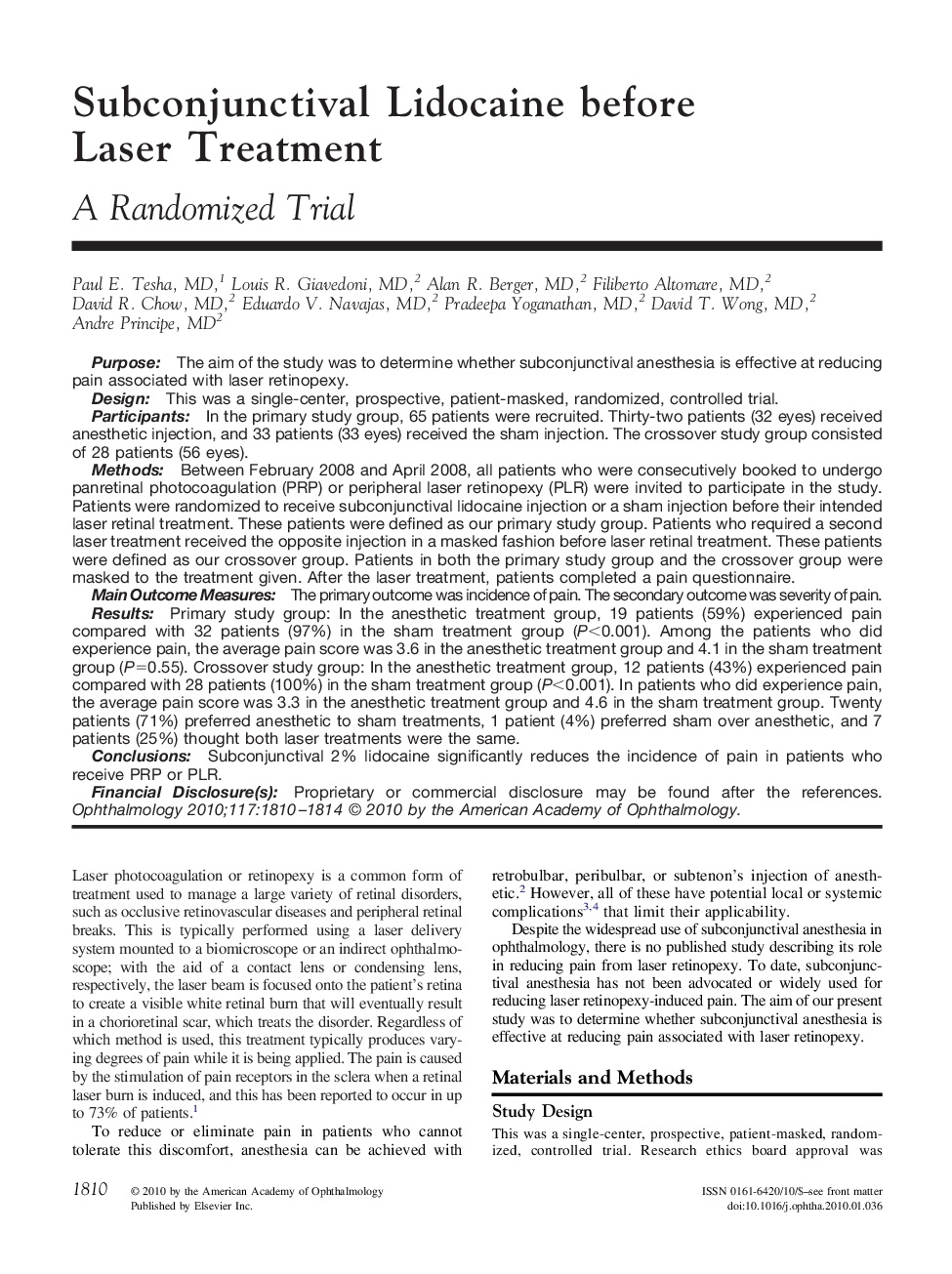| Article ID | Journal | Published Year | Pages | File Type |
|---|---|---|---|---|
| 4028215 | Ophthalmology | 2010 | 5 Pages |
PurposeThe aim of the study was to determine whether subconjunctival anesthesia is effective at reducing pain associated with laser retinopexy.DesignThis was a single-center, prospective, patient-masked, randomized, controlled trial.ParticipantsIn the primary study group, 65 patients were recruited. Thirty-two patients (32 eyes) received anesthetic injection, and 33 patients (33 eyes) received the sham injection. The crossover study group consisted of 28 patients (56 eyes).MethodsBetween February 2008 and April 2008, all patients who were consecutively booked to undergo panretinal photocoagulation (PRP) or peripheral laser retinopexy (PLR) were invited to participate in the study. Patients were randomized to receive subconjunctival lidocaine injection or a sham injection before their intended laser retinal treatment. These patients were defined as our primary study group. Patients who required a second laser treatment received the opposite injection in a masked fashion before laser retinal treatment. These patients were defined as our crossover group. Patients in both the primary study group and the crossover group were masked to the treatment given. After the laser treatment, patients completed a pain questionnaire.Main Outcome MeasuresThe primary outcome was incidence of pain. The secondary outcome was severity of pain.ResultsPrimary study group: In the anesthetic treatment group, 19 patients (59%) experienced pain compared with 32 patients (97%) in the sham treatment group (P<0.001). Among the patients who did experience pain, the average pain score was 3.6 in the anesthetic treatment group and 4.1 in the sham treatment group (P=0.55). Crossover study group: In the anesthetic treatment group, 12 patients (43%) experienced pain compared with 28 patients (100%) in the sham treatment group (P<0.001). In patients who did experience pain, the average pain score was 3.3 in the anesthetic treatment group and 4.6 in the sham treatment group. Twenty patients (71%) preferred anesthetic to sham treatments, 1 patient (4%) preferred sham over anesthetic, and 7 patients (25%) thought both laser treatments were the same.ConclusionsSubconjunctival 2% lidocaine significantly reduces the incidence of pain in patients who receive PRP or PLR.Financial Disclosure(s)Proprietary or commercial disclosure may be found after the references.
